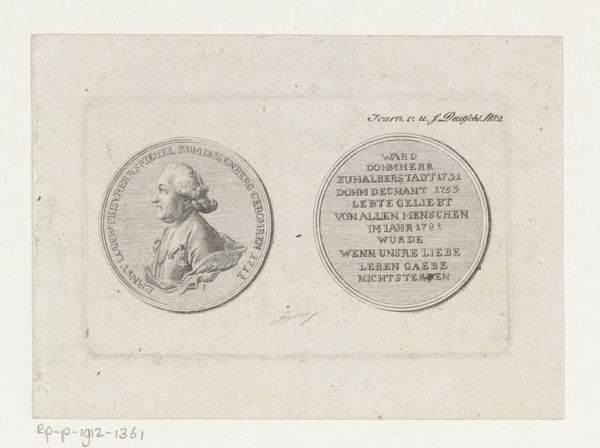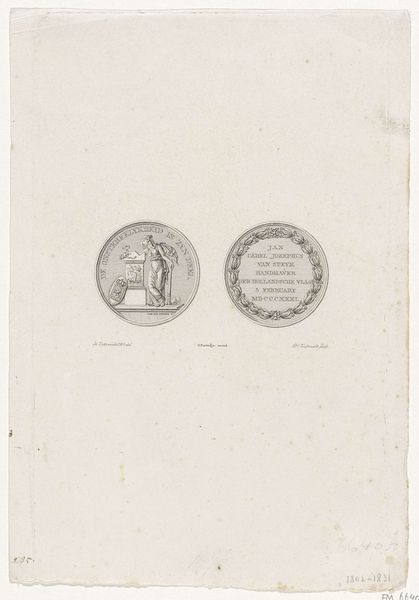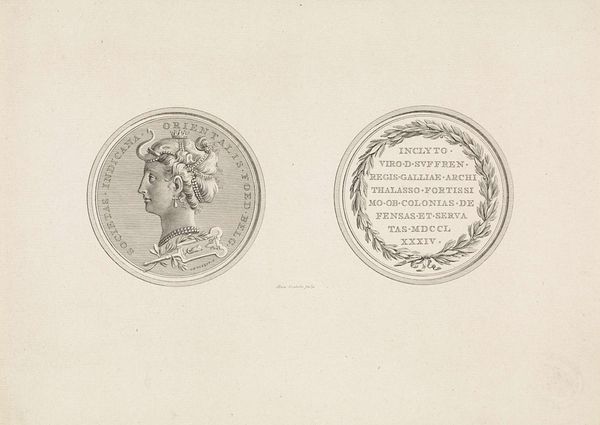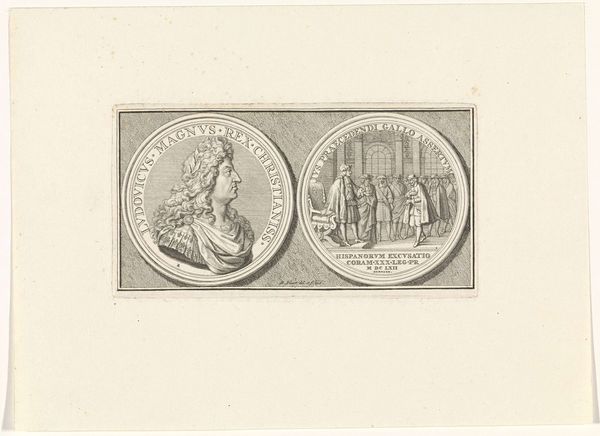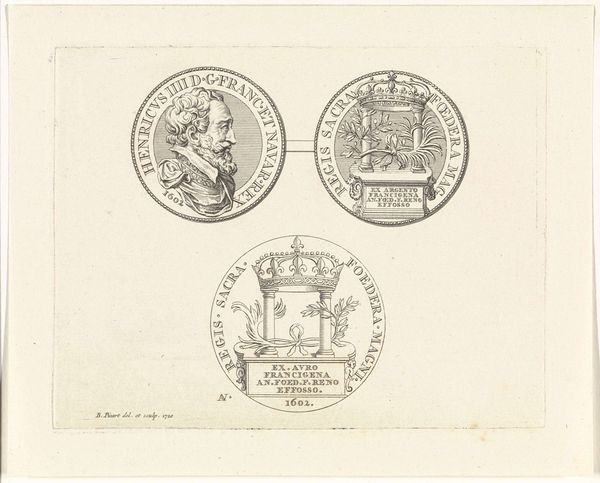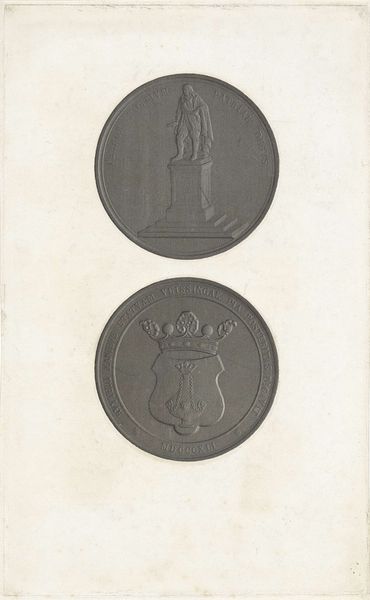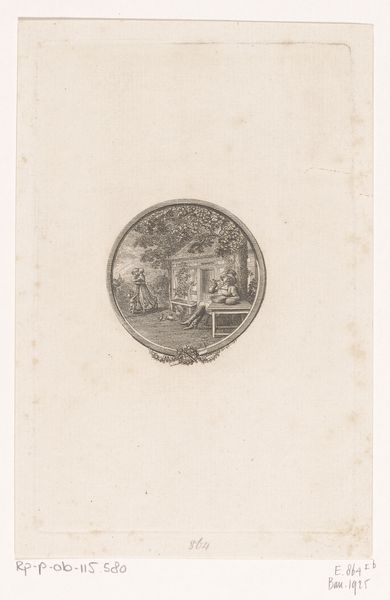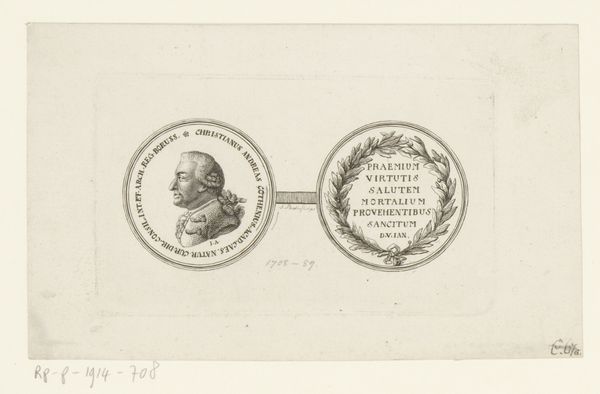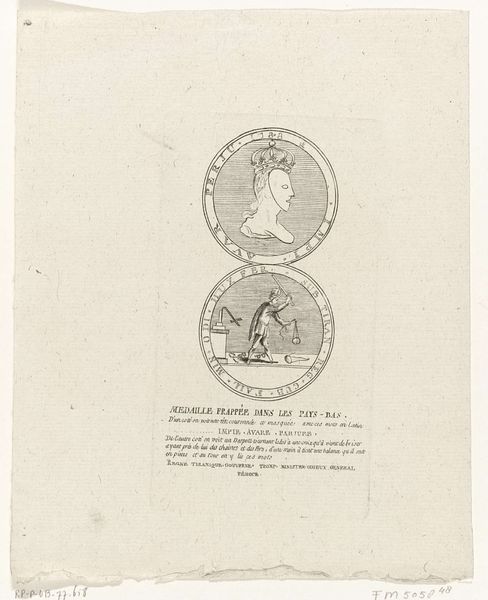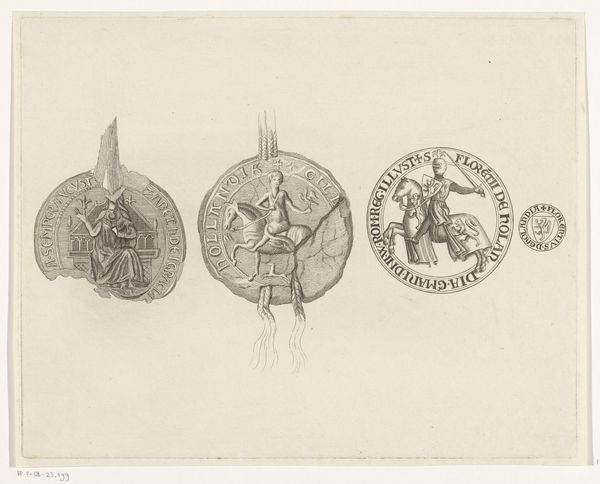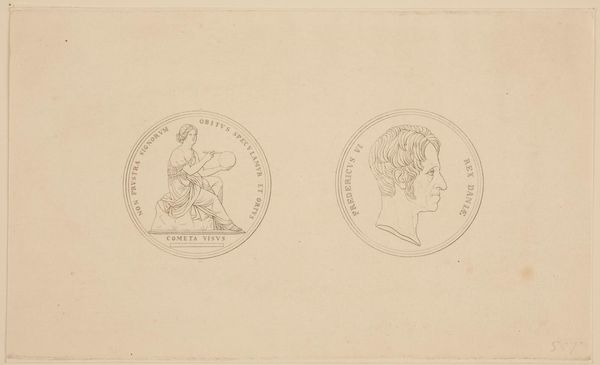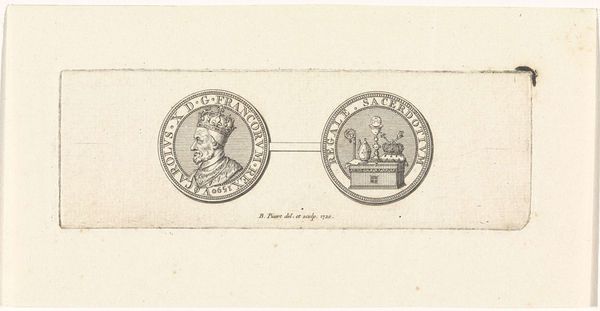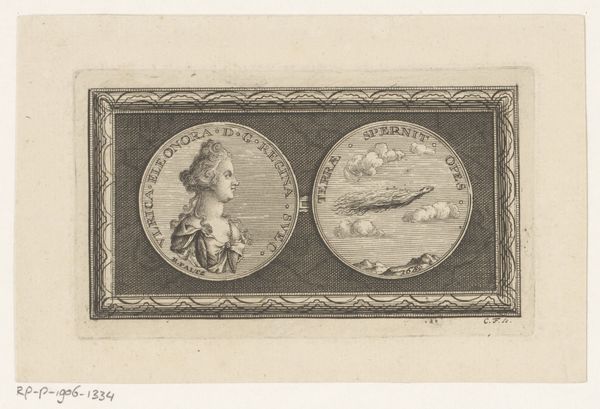
Gedenkpenning ter ere van het 25-jarig regeringsjubileum van Willem III, koning der Nederlanden, aangeboden op 13 mei 1874 1874
0:00
0:00
Dimensions: height 191 mm, width 283 mm
Copyright: Rijks Museum: Open Domain
Editor: This is an engraving of a commemorative medal from 1874 celebrating the 25th Jubilee of King Willem III of the Netherlands. The depiction features his portrait flanked by allegorical figures. It’s really interesting how the imagery references older coins and medals. How would you interpret this within a broader historical and cultural context? Curator: Well, its Neoclassical style immediately tells us something about the prevailing aesthetic preferences and political aspirations of the time. These medals weren't just objects; they were carefully crafted messages. Consider the choice of imagery and text - everything from the portrait's composition to the surrounding symbolism was deliberately chosen to project an image of strength, stability, and continuity. Who was this King Willem III and what kind of society was he leading? Editor: From what I remember, Willem III’s reign faced rising democratic and socialist movements. Does the medal serve as a tool for solidifying royal authority? Curator: Exactly. It’s a carefully constructed piece of propaganda. It emphasizes the continuity of the House of Orange-Nassau during times of immense change. The engraving style recalls earlier eras of power and prestige, while the inscription links Willem to his lineage and suggests inherent virtue in his leadership. It almost idealizes the past, while presenting the monarchy as necessary. The placement in Rijksmuseum solidifies the national historical narrative. Editor: So it's less about a literal representation of Willem III and more about constructing a particular narrative around his reign for public consumption? Curator: Precisely. Medals like this become fascinating case studies in the politics of imagery and the role of art in shaping public opinion. This work provides insight into how the ruling class tried to manage socio-political pressures through the art production of the time. What would you research further about this imagery if you were developing a gallery talk about the piece? Editor: I would look further into how similar medals have been created through other periods in European History, and what specific artisans created it and if that's indicative of who the work was targeted at. Thanks for providing new perspective! Curator: Of course. Remember that even seemingly simple commemorative items can offer profound insights into the dynamics of power, representation, and the public role of art.
Comments
No comments
Be the first to comment and join the conversation on the ultimate creative platform.
